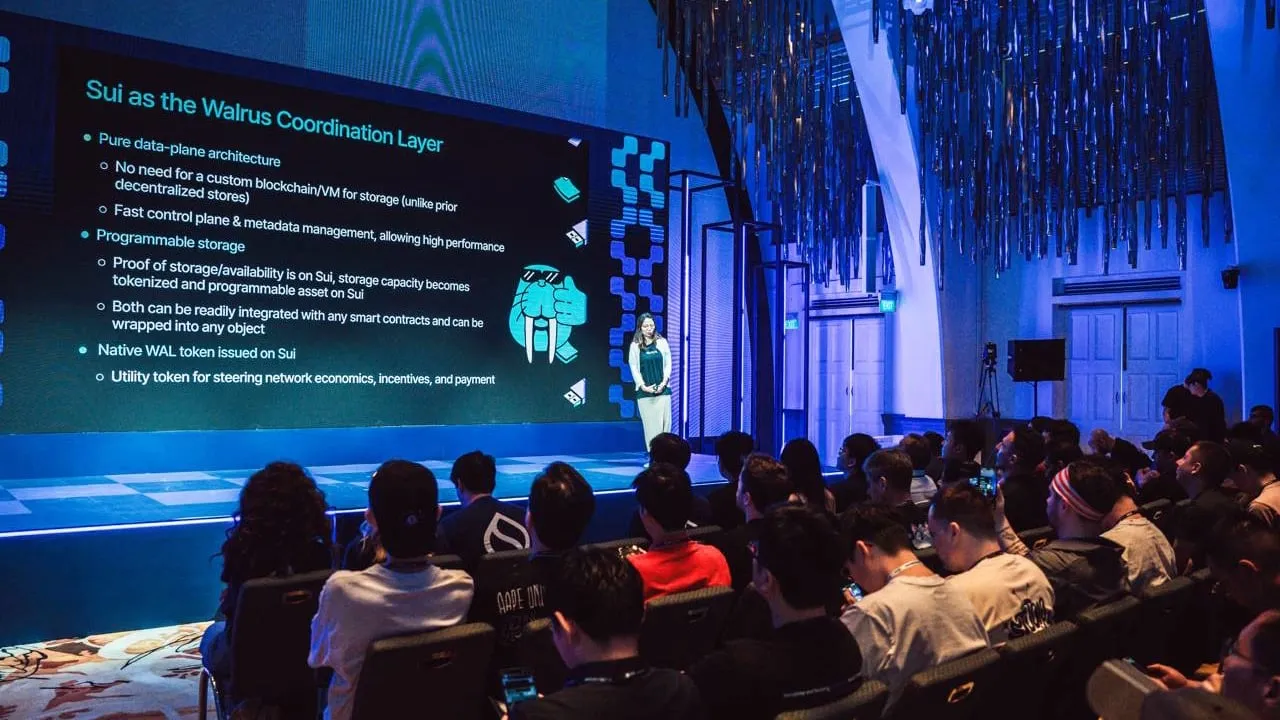Mysten Labs introduces Walrus, a decentralized storage and data availability protocol, at the Sui Builder House event in Singapore.
“Recognizing the significance of data and the lack of storage innovation in recent times, Mysten has identified decentralized storage as a crucial area to focus on in order to bring Web3 to life,” stated Janet Wu, Director of Product at Mysten Labs, in an interview with Decrypt.
Just in from #BuilderHouse Singapore…Walrus will officially be an independent Delegated Proof-of-Stake Network, governed and incentivized by its native utility token, WAL. pic.twitter.com/bZz6sw7vRh
— Walrus (@WalrusProtocol) September 17, 2024
The unveiling of the Walrus whitepaper and the introduction of the upcoming WAL token mark the next phase of the project’s development, following its devnet launch in June 2024.
Lefteris Kokoris-Kogias, a researcher at Mysten Labs, mentioned that the decentralized storage platform “unlocks Web3 for applications like social networks with rich content needs, collaborative platforms such as GDocs, and AI training with data provenance guarantees.”
Decentralized storage allows data to be distributed across multiple nodes, offering strong resistance to censorship and improved reliability, as explained by Kokoris-Kogias.
Walrus, described as a “next-generation” decentralized storage platform by Sui Product Marketing Manager Casson Rosenblatt, is built on the layer-1 network Sui and stores data as “blobs.”
At the core of Walrus lies a new data encoding algorithm, Red Stuff, which utilizes a unique algorithm based on fountain codes. This algorithm’s simplicity enables the encoding of large files in a single pass, leading to significantly faster processing, according to the Walrus whitepaper.
WAL tokenomics
During a presentation, Janet Wu explained the tokenomics of Walrus’ proof of stake token, WAL.
WAL’s staking model allows nodes to receive data based on their relative stake, with storage prices collectively determined by storage nodes. Payments from users are distributed back to stakers in the form of staking rewards. Attestation involves storage nodes undertaking “asynchronous data challenges” to ensure data retention, with their stake being reduced if they fail the challenges.

Janet Wu, Director of Product at Mysten Labs. Image: Mysten Labs
WAL also serves as a governance token, allowing stakers to vote on parameter adjustments. The tokenomics are designed to enable Walrus’ storage nodes to function effectively and encourage participants to collaborate as a decentralized system.
With the Walrus testnet scheduled for launch later this year, the platform has attracted interest from projects seeking to utilize its decentralized storage solution. The Walrus Devnet Hackathon, Breaking the Ice, has received 60 project submissions and 288 registered participants, offering a $50,000 prize pool for the winners.
Decrypt has partnered with Walrus to store its news articles, videos, and photos on the protocol.
“Any developer from any blockchain can build on Walrus,” Wu stated. “While Walrus utilizes Sui as the underlying coordination layer, it is chain-agnostic, allowing applications from any blockchain to integrate with Walrus. The protocol is suitable for anyone looking to decentralize their stack and storage. You can develop Web2 apps that leverage Walrus for its resilience and transparency.”

